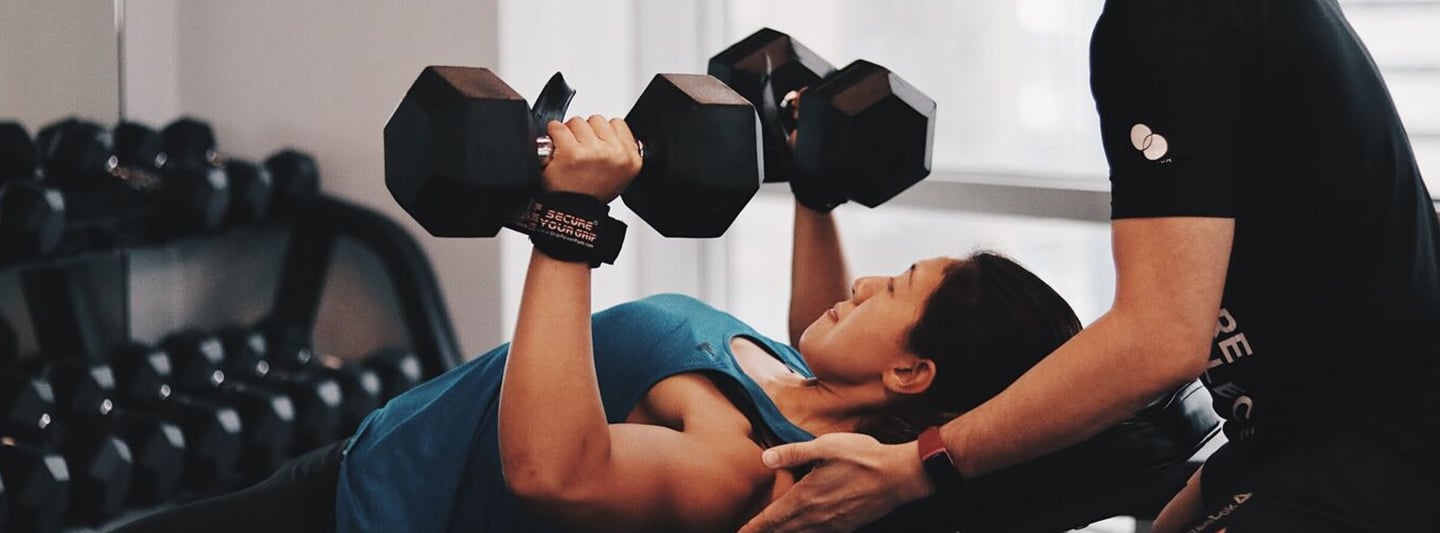Are you a personal trainer or gym? This is how to make your clients sick.
Let me begin by saying, just because an exercise machine is at your gym does not mean it’s safe or designed with proper biomechanics in mind. While poor client dysfunction on any machine can turn an otherwise safe movement into a risky activity creating further dysfunction, there are a few machines that a gym should completely avoid investing in and personal trainers should avoid having their clients use altogether.
There is an argument here of course - you are limited by the time you have with a client but when you think about it, is this really a reason to sacrifice a clients health and form by handing them a workout without much thought to purely entertain them?
When sharing my thoughts for this month’s blog post with Stuart, who has just joined Core Collective, he had this to say, “It is key to make the most of that limited time by using the most time effective movements for the clients goals and needs. Variety is great, but not if it sacrifices effectiveness to a large degree.”
So, it seems the personal trainers we attract to grow their businesses with us think the same.
In a previous blog, I alluded to why gyms and health clubs don’t really put much thought into gym floor layout and design and how this could be limiting your effectiveness as a coach, ultimately impacting your bottom line.
In this blog, I intend to create a healthy debate around which exercise machines, when positioned in a gym with some thought behind them, would still deliver unparalleled results for your clients.
I write this with you and your client in mind in line with one of our core values at Core Collective: betterment.
Hopefully, by the end of this post, you’ll have a little more perspective and be in a better position to make a choice on the direction you intend to take your personal training business, preferably with Core Collective.
Here are the 4 exercise machines your gym should have never invest in and you should never recommend for your clients unless you want to make them sick:
1) Smith Machine
The misunderstanding with the Smith Machine is that people are convinced they are still doing free weight movements when they perform exercises on it. On the other hand, personal trainers are convinced that this is a safer choice for those clients that are new to lifting.
Because a bar is attached to the machine does not make this a free weight exercise. The Smith Machine only allows movement in a fixed plane of motion.
The machine locks the user in a very unnatural movement pattern which inappropriately stresses structures/joints and doesn’t train the body in various planes as it is naturally supposed to do.
To add, mostly, these types of rigid planes of movement don’t offer the same benefits that the same movements with a higher stability demand offer.
While the load placed upon the muscle could be similar in both exercises, the Smith Machine and barbell squats give them similar muscle growth potential and greater stability demand. The freedom of movement on the barbell squat will allow much greater development of strength and stability around the shoulder joint and surrounding tissues.
It seems there is an agreement here but what about you? What are your thoughts on this?
2) Seated Bicep Curl Machines, Adductor/Abductor Machines, any machines that uses only single joint, one muscle
Now, the trap I see most often trainers falling into here is that their client has stated that they would like to tone their arms or work on their thighs so they automatically jump to the machine or exercise that promotes this sort of training effect.
But what trainers are missing and something Stuart alluded to in my discussion with him, is how they should consider replacing these types of exercises with more compound exercises that hit multiple muscles and joints. Surely, this will give your clients more bang for their buck.
Again, just because the exercise machine is nicely placed in the gym doesn’t mean it is the most effective.
Just like the seated ab machines or back extensions, right? Chiropractor Dr Kevin Tomassini kindly put this video together to demonstrate exercises that target the same areas but involve a lot more muscle recruitment, joints and movement.
Having both fitness and wellness professionals at Core Collective allows for such collaboration. Just imagine how beneficial it would be for your client to have access to a chiropractor, sports massage therapist and a personal trainer allowing for a multifaceted approach totally centred around the client goals. Great, yes?
3) Badly-thought-out thrashings
Stole this term from... You guessed it.
Stuart.
But before I share what he had to say, I have never really understood trainers’ reasons for feeling like they should have to absolutely kill their clients in sessions. It’s like a power trip or something.
I’ve experienced and seen a few thrashings. One that always springs to mind whenever I bring this up happened in a small gym back in Leicester, UK, a real bodybuilder’s gym. Picture this, a trainer was ordering his client to carry the garbage bin around with him, warning him that he would need it at any one point during the session. His aim is to make the client throw up. Apparently, that means you’ve had a good workout.
Now, that is the worst of the worst, right?. But then again, similar happenings still go on in gyms, trainers celebrating together, like they have a daily leaderboard that tracks how many clients they managed to make feel sick.
On the other end of the spectrum, I just feel that trainers run out of ideas and try to fulfil the 1-hour of time with their clients because they’ve only been hired for an hour, clock watching, winding it down with anything and everything just to take the client’s mind off how shockingly bad of a program designer the trainer is.
The sad part here is clients have become accustomed to this type of service, which by large is affecting the fitness industry and the good trainers amongst it. I touch on this more here, in the blog post, why charging by the hour is a bad thing. Check it out.
Sorry, just realised I went on to a little rant.
I digressed.
Here is Stuart’s more polite and politically-correct take on this all, “Having clients jumping straight into an unnecessary high volume training program not only increases risks of injury but can also lead to going over an individual's ability to recover. This means that they never actually get the chance to improve. Having a progressive structured training program that takes into account the individual’s starting point and situation is paramount.”
The key point for me is ‘progressive structured training program’. This largely doesn’t happen because the commercial gym space doesn’t ever consider designing the layout to compliment a good program design.
To bring this to an end, I just encourage you to consider the following:
Regardless of the gym you currently operate your personal training business from, do you push yourself outside of your comfort zone? How do you grow personally and professionally? Are you doing everything you can to grow as a business? How do you challenge yourself to grow? Is there a sense of betterment everyday?
Coincidentally enough, these are the questions our residents ask themselves everyday as they are the core values of Core Collective we promote. We feel that by empowering our residents, we help them get the best chance possible to further their personal and professional lives.
Curious to learn how to become a Resident at Core Collective? Get in touch with us here.
I encourage you to figure out how you can hack your environment to make that switch happen. Questions or feedback save them for when we meet here!

